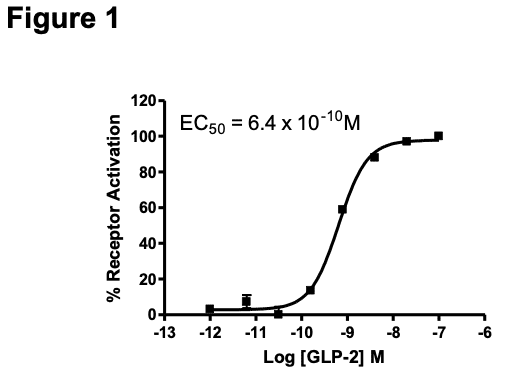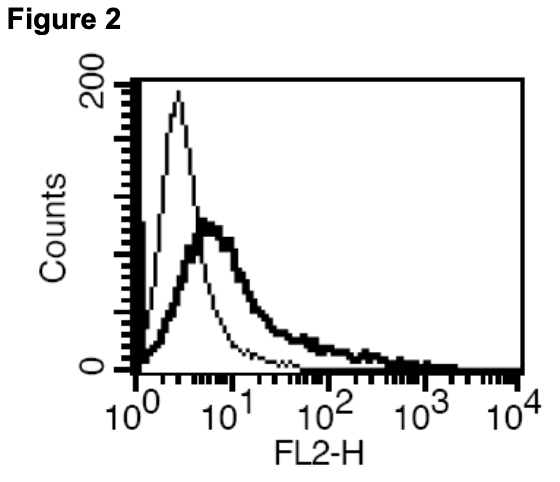Product Information
Catalog Number:
C1268
Lot Number:
C1268-122011
Quantity:
1 vial (2 x 106) frozen cells
Freeze Medium:
Sigma Freezing Medium (C-6164)
Host cell:
HEK293T
Transfection:
Expression vector containing full-length human GLP-2 cDNA (GenBank Accession Number NM_004246) with FLAG tag sequence at N-terminus
Recommended Storage:
Liquid nitrogen upon receiving
Propagation Medium: DMEM, 10% FBS, 1 μg/mL puromycin
Stability:
Stable in culture for minimum of two months
Data Sheet
Background: Glucagon-like peptide 2 receptor belongs to the glucagon-secretin receptor superfamily of GPCRs. The human GLP-2 receptor gene is localized on chromosome 17p13.3. The GLP-2 receptor exhibits ~50% amino acid identity with GLP-1 receptor. GLP-2 receptor binds to Glucagon-like peptide-2 (GLP-2) is a nutrient-responsive hormone and activates adenylate cyclase pathway and to a lesser extent activates MAP kinases. GLP-2 receptors are found in the central nervous system and gastrointestinal tract, with the highest expression levels in jejunum. The principal role of GLP-2 receptors appears to be the maintenance of the growth, nutrient absorption, cell proliferation, apoptosis, mucosal blood flow and suppressing gastric motility and secretion. The regenerative and cytoprotective properties of GLP-2 contribute to its therapeutic potential for the treatment of patients with intestinal disease. Recent studies have suggested that GLP-2 not only modulates intestinal stem cell behavior but may also promote carcinogenesis in models of sporadic colon cancer. Further consideration of the molecular cross-talk and downstream signaling pathways mediating the intestinotropic effects of GLP-2 is important. A detailed delineation of the signaling pathways activated by gut peptide GPCRs, as exemplified by GLP-1and GLP-2, may provide new therapeutic targets for the treatment of human disorders such as diabetes and intestinal disease, respectively.
Application: Functional assays


Figure 1. Dose-dependent stimulation of intracellular cAMP level upon treatment with ligand, measured with MultiscreenTM TR-FRET cAMP 1.0 No Wash Assay Kit (Multispan MSCM01). Figure 2. Receptor expression on cell surface measured by flow cytometry (FACS) using an anti-FLAG antibody. Thin line: parental cells; thick line: receptor-expressing cells.
References:
Jennifer L. Estall and Daniel J. Drucker (2003) Dual Regulation of Cell Proliferation and Survival via Activation of Glucagon-Like Peptide-2 Receptor Signaling J. Nutr. 133: 3708–3711.
Rocha et al (2004) Glucagon-like peptide-2: divergent signalling pathways. J.Surg.Res. 121: 5-9.
Brubaker and Drucker (2004) Glucagon-like peptides regulate cell proliferation and apoptosis in the pancreas, gut, and central nervous system. Endocrinol. 145 : 2653-2659.
